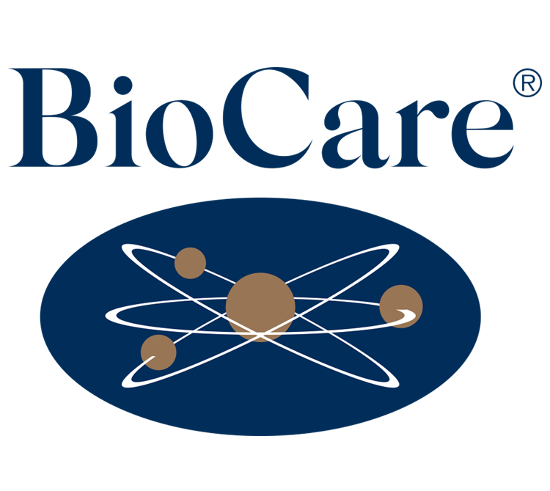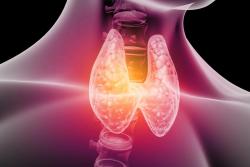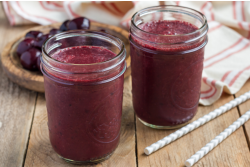Addictive disorders are increasingly growing as a result of the mental, physical and financial implications of the COVID-19 pandemic.1 In particular, the social isolation created by the pandemic has also driven a rise in addictive behaviours2 as a result of increased anxiety.1 These revolve around the consumption or use of a stimulus that drives feelings of pleasure; stimuli may involve agonists, which are substances capable of binding to and activating a neurotransmitter target cell e.g. alcohol, cocaine, caffeine, nicotine and sugar, or environmental stimuli such as smart devices and exercise. Seemingly ‘healthy’ habits can also drive addictive behaviours, highlighted by psychological conditions like orthorexia, which is characterised by an obsession with eating ‘clean’ eating.3
The term ‘addiction’ refers to a compulsive, physiological need to engage in rewarding stimuli despite often adverse and negative consequences.4 It is characterised by a compulsion to seek and take an agonist, loss of control in limiting intake, and a negative emotional state when access is restricted.4 Whilst some individuals may on occasion use these stimulants, addiction is clinically distinct in that individuals are dependent on substances to function.5
Pathophysiology
Addiction is multifactorial and can be influenced by various environmental and genetic factors.4 The transition to addiction involves neuroplasticity in the brain structures that regulate motivation, anticipation and reward. It involves a structural change in the associated neural pathways and neurotransmitters including dopamine, serotonin, gamma amino butyric acid (GABA) and glutamate.5 Differences between compulsion-seeking behaviour and compulsion-taking behaviour highlight distinctions in addictive behaviours and have demonstrated variations in neural pathways and neurotransmitter activity that drives addiction.6
Dopamine-mediated positive reinforcement
Dopamine is responsible for making us feel pleasure, satisfaction and motivation and dopamine-craving is a large part of addictive behaviours.4 The mesolimbic pathway, often referred to as the reward pathway, is a dopaminergic pathway in the brain which is a collection of dopamine-releasing neurons.5 When an agonist stimulates this pathway, the brain exhibits plasticity and adapts the neural pathways to increase dopamine signalling because it is pleasurable.4 However, over time where there is repeated exposure, these pathways will continue to adapt to allow for higher levels of dopamine.5 The body then craves more of these substances which can lead to addictive behaviours.5
Often, the anticipation of the reward drives higher dopamine than consuming the reward itself,7 which can leave individuals unsatisfied and craving more. This suggests dopaminergic dysfunction may underlie reward-based behaviours.7 This is supported by Soloman and Corbit’s Model of Opponent-Process Theory,8 which demonstrates that the rebound processes (going from a dopamine high to a low) involved in addiction are always the exact opposite, which further drives addiction. The response and adaptation to a ‘dopamine-high’ where there is reduced sensitivity to agonists and thus a higher tolerance level, increases corticotropin-releasing factor, causing withdrawal and cravings experienced as anxiety and tension.8 The theory posits that the more of an addictive substance one is exposed to, the more powerful the responding feelings of stress, withdrawal, and anxiety.8
Genetics
Variations or Single Nucleotide Polymorphisms (SNPs) in genes that regulate neurotransmitter synthesis demonstrates individual predisposition to addictive behaviours.
The OPRM1 (Opioid Receptor Mu 1) gene is an opioid receptor, to which opioids and endorphins bind and exert a therapeutic effect, stimulating dopamine production.9 This receptor improves dopamine sensitivity and SNPs can leave individuals unaffected by endorphins created by environmental factors,9 such as exercise. Instead, individuals may consume dopamine stimulants; nicotine works on this receptor,9 demonstrating the potential relationship between smoking and OPRMI variants.
Alongside dopamine-craving, the desire to reduce anxiety can influence addiction. GABA is a calming neurotransmitter that reduces stress by inhibiting glutamate, which is excitatory in nature.10 Glutamate decarboxylase (GAD) enzymes are responsible for the conversion of glutamate to GABA11 and where there are polymorphisms in GAD enzymes, individuals do not effectively convert to GABA and so are more likely to display symptoms of anxiety. 11 The GABRA2 gene is a GABA receptor, and low sensitivity GABRA2 receptors can also predispose individuals to anxiety as there is less uptake of GABA.12 Further, this receptor responds to alcohol in a similar way to GABA, so continuous consumption of alcohol can be seen as a ‘solution’ for reducing feelings of anxiety where receptors are desensitised.13
The catechol-o-methyltransferase (COMT) enzyme deactivates neurotransmitters including adrenaline and dopamine.14 Individuals with the wild COMT genotype are fast recyclers of dopamine and so naturally have lower levels which can predispose them to addictive behaviours as they often seek a dopamine hit.14 The monoamine oxidase (MAO) enzymes called MAO-A and MAO-B are responsible for the regulation and breakdown of monamine neurotransmitters including dopamine, serotonin, adrenaline, noradrenaline15 and SNPs can cause the fast recycling of dopamine. The fast MAO-B is dominant over fast, so where there is fast MAO-B and wild COMT, individuals are more likely to have addictive tendencies as it predisposes them to lower dopamine.15
Methylation is critical in the regulation and degradation of neurotransmitters, particularly dopamine. The active metabolite of folate, 5-methyltetrahydrofolate, participates in re-methylation of the amino acid metabolite homocysteine, creating methionine. S-adenosylmethionine (SAMe), the downstream metabolite of methionine, is involved in numerous biochemical methyl donation reactions, including reactions forming monoamine neurotransmitters.16SNPs in associated genes such as the MTHFR can drive addictive behaviours as well as neurological disorders associated with dopamine dysfunction such as Obsessive Compulsive Disorder (OCD)17 and Attention Deficit Hyperactivity Disorder (ADHD).18 5-methyltetrahydrofolate also feeds into the Biopterin Cycle which is responsible for converting phenylalanine to tyrosine,19 which is a direct precursor to dopamine and serotonin.20
Sex Hormones
Oestrogen helps regulate dopamine and has a direct relationship with brain-derived neurotrophic factor (BDNF),21 which is vital to the growth and development of neurons. Oestrogen increases the number of dopamine receptors in the brain and where oestrogen levels are raised, e.g. the follicular phase of the menstrual cycle, dopamine levels are found to be higher.22 This mechanism alludes to the significance of menopause in addictive behaviours,23 where oestrogen levels naturally decline which can drive dopamine and GABA seeking behaviour to relieve stress, tension and anxiety. Further, progesterone generally has a calming effect as a metabolite, ALLO-P, interacts with the GABRA2 receptor,24 however, as levels of progesterone also decline through menopause, there is less interaction with the GABRA2 receptor.24 On the other hand, the natural fluctuations of oestrogen and progesterone during the menstrual cycle, often lead to pronounced mood fluctuation, specifically highlighted by depression, anxiety, and perhaps a tendency to addictive behaviour in the luteal phase in some individuals, especially in those genetically susceptible.
Environmental Influences
Adverse Childhood Experiences (ACEs) are associated with addictive behaviours where a singular or multiple traumatic events create anxiety or tension.25 When experienced chronically, this can drive individuals to engage in behaviours that stimulate GABA receptors to relieve anxious feelings.26 Research has demonstrated that using an addictive substance when younger e.g. in teenage years, can predispose an individual to addiction in later life as the substances alter neural pathways at a critical time in development, when pathways are extremely flexible and adaptable to change.27
Parental addiction can also drive addiction, where inherited genes may influence the likelihood of addictive behaviours in later generations.28 Epigenetics alludes to the genetic influence in relation to contextual factors.29 Referring to Soloman and Corbit’s Model of Opponent-Process Theory, withdrawal symptoms could be experienced across generations.30 Historical exposure to an agonist which has altered neural pathways can trigger the brain to associate certain environmental cues with addictive behaviours and the opposing feelings of withdrawal. For example, walking into a bar and smelling alcohol or hearing laughter can trigger feelings of withdrawal and craving as these behaviours were once associated with a dopamine high and the brain automatically triggers those opposing feelings.30
Pathophysiology
Addiction is multifactorial and can be influenced by various environmental and genetic factors.4 The transition to addiction involves neuroplasticity in the brain structures that regulate motivation, anticipation and reward. It involves a structural change in the associated neural pathways and neurotransmitters including dopamine, serotonin, gamma amino butyric acid (GABA) and glutamate.5 Differences between compulsion-seeking behaviour and compulsion-taking behaviour highlight distinctions in addictive behaviours and have demonstrated variations in neural pathways and neurotransmitter activity that drives addiction.6
Dopamine-mediated positive reinforcement
Dopamine is responsible for making us feel pleasure, satisfaction and motivation and dopamine-craving is a large part of addictive behaviours.4 The mesolimbic pathway, often referred to as the reward pathway, is a dopaminergic pathway in the brain which is a collection of dopamine-releasing neurons.5 When an agonist stimulates this pathway, the brain exhibits plasticity and adapts the neural pathways to increase dopamine signalling because it is pleasurable.4 However, over time where there is repeated exposure, these pathways will continue to adapt to allow for higher levels of dopamine.5 The body then craves more of these substances which can lead to addictive behaviours.5
Often, the anticipation of the reward drives higher dopamine than consuming the reward itself,7 which can leave individuals unsatisfied and craving more. This suggests dopaminergic dysfunction may underlie reward-based behaviours.7 This is supported by Soloman and Corbit’s Model of Opponent-Process Theory,8 which demonstrates that the rebound processes (going from a dopamine high to a low) involved in addiction are always the exact opposite, which further drives addiction. The response and adaptation to a ‘dopamine-high’ where there is reduced sensitivity to agonists and thus a higher tolerance level, increases corticotropin-releasing factor, causing withdrawal and cravings experienced as anxiety and tension.8 The theory posits that the more of an addictive substance one is exposed to, the more powerful the responding feelings of stress, withdrawal, and anxiety.8
Genetics
Variations or Single Nucleotide Polymorphisms (SNPs) in genes that regulate neurotransmitter synthesis demonstrates individual predisposition to addictive behaviours.
The OPRM1 (Opioid Receptor Mu 1) gene is an opioid receptor, to which opioids and endorphins bind and exert a therapeutic effect, stimulating dopamine production.9 This receptor improves dopamine sensitivity and SNPs can leave individuals unaffected by endorphins created by environmental factors,9 such as exercise. Instead, individuals may consume dopamine stimulants; nicotine works on this receptor,9 demonstrating the potential relationship between smoking and OPRMI variants.
Alongside dopamine-craving, the desire to reduce anxiety can influence addiction. GABA is a calming neurotransmitter that reduces stress by inhibiting glutamate, which is excitatory in nature.10 Glutamate decarboxylase (GAD) enzymes are responsible for the conversion of glutamate to GABA11 and where there are polymorphisms in GAD enzymes, individuals do not effectively convert to GABA and so are more likely to display symptoms of anxiety. 11 The GABRA2 gene is a GABA receptor, and low sensitivity GABRA2 receptors can also predispose individuals to anxiety as there is less uptake of GABA.12 Further, this receptor responds to alcohol in a similar way to GABA, so continuous consumption of alcohol can be seen as a ‘solution’ for reducing feelings of anxiety where receptors are desensitised.13
The catechol-o-methyltransferase (COMT) enzyme deactivates neurotransmitters including adrenaline and dopamine.14 Individuals with the wild COMT genotype are fast recyclers of dopamine and so naturally have lower levels which can predispose them to addictive behaviours as they often seek a dopamine hit.14 The monoamine oxidase (MAO) enzymes called MAO-A and MAO-B are responsible for the regulation and breakdown of monamine neurotransmitters including dopamine, serotonin, adrenaline, noradrenaline15 and SNPs can cause the fast recycling of dopamine. The fast MAO-B is dominant over fast, so where there is fast MAO-B and wild COMT, individuals are more likely to have addictive tendencies as it predisposes them to lower dopamine.15</mao-a<>
Methylation is critical in the regulation and degradation of neurotransmitters, particularly dopamine. The active metabolite of folate, 5-methyltetrahydrofolate, participates in re-methylation of the amino acid metabolite homocysteine, creating methionine. S-adenosylmethionine (SAMe), the downstream metabolite of methionine, is involved in numerous biochemical methyl donation reactions, including reactions forming monoamine neurotransmitters.16SNPs in associated genes such as the MTHFR can drive addictive behaviours as well as neurological disorders associated with dopamine dysfunction such as Obsessive Compulsive Disorder (OCD)17 and Attention Deficit Hyperactivity Disorder (ADHD).18 5-methyltetrahydrofolate also feeds into the Biopterin Cycle which is responsible for converting phenylalanine to tyrosine,19 which is a direct precursor to dopamine and serotonin.20
Sex Hormones
Oestrogen helps regulate dopamine and has a direct relationship with brain-derived neurotrophic factor (BDNF),21 which is vital to the growth and development of neurons. Oestrogen increases the number of dopamine receptors in the brain and where oestrogen levels are raised, e.g. the follicular phase of the menstrual cycle, dopamine levels are found to be higher.22 This mechanism alludes to the significance of menopause in addictive behaviours,23 where oestrogen levels naturally decline which can drive dopamine and GABA seeking behaviour to relieve stress, tension and anxiety. Further, progesterone generally has a calming effect as a metabolite, ALLO-P, interacts with the GABRA2 receptor,24 however, as levels of progesterone also decline through menopause, there is less interaction with the GABRA2 receptor.24 On the other hand, the natural fluctuations of oestrogen and progesterone during the menstrual cycle, often lead to pronounced mood fluctuation, specifically highlighted by depression, anxiety, and perhaps a tendency to addictive behaviour in the luteal phase in some individuals, especially in those genetically susceptible.
Environmental Influences
Adverse Childhood Experiences (ACEs) are associated with addictive behaviours where a singular or multiple traumatic events create anxiety or tension.25 When experienced chronically, this can drive individuals to engage in behaviours that stimulate GABA receptors to relieve anxious feelings.26 Research has demonstrated that using an addictive substance when younger e.g. in teenage years, can predispose an individual to addiction in later life as the substances alter neural pathways at a critical time in development, when pathways are extremely flexible and adaptable to change.27
Parental addiction can also drive addiction, where inherited genes may influence the likelihood of addictive behaviours in later generations.28 Epigenetics alludes to the genetic influence in relation to contextual factors.29 Referring to Soloman and Corbit’s Model of Opponent-Process Theory, withdrawal symptoms could be experienced across generations.30 Historical exposure to an agonist which has altered neural pathways can trigger the brain to associate certain environmental cues with addictive behaviours and the opposing feelings of withdrawal. For example, walking into a bar and smelling alcohol or hearing laughter can trigger feelings of withdrawal and craving as these behaviours were once associated with a dopamine high and the brain automatically triggers those opposing feelings.30
Lifestyle recommendations
-
Reduce use of smart devices as blue light exposure disrupts the body’s circadian rhythm,41 which interferes with melatonin and cortisol production. This can also impact daytime energy and blood sugar levels, increasing the likelihood of individuals reaching for agonists that promote GABA.
-
Encourage activities where temptations are removed to avoid feelings of cravings and withdrawal. In more severe cases, referring for emotional and behavioural support may be appropriate, such as counselling, life coaching, Emotional Freedom Technique (EFT) and Cognitive Behavioural Therapy (CBT) to give individuals tools to navigate potentially triggering situations.
-
Incorporate daily exercise such as walking, yoga, running or cold water swimming which can naturally release endorphins, promote GABA and serotonin.42 This supports the regulation of the nervous system and put the body into a parasympathetic state, or rest and digest.
-
Reduce toxic load by using natural, organic household and beauty products
Dietary recommendations
The role of nutrition in addiction is to focus on supporting individual genetic factors, if known, optimising detoxification, and promoting stable blood glucose and neurotransmitter regulation, whilst also improving absorption of nutrients for metabolic and nervous function, especially if the addiction has led to nutrient depletions. For example, alcohol addictions can cause severe nutrient deficiencies in zinc, folate, B1, B2, vitamin A, vitamin D31 through impaired appetite, malabsorption and oxidation of nutrients.31
- Blood sugar regulation - Dopamine is a precursor to adrenaline and noradrenaline, and so under stressful situations where cortisol is released, the release of dopamine is stimulated.32 As cortisol drives an increase in blood glucose, dopamine fluctuations can cause blood-sugar imbalances, which can perpetuate sugar cravings. To help balance blood sugar and reduce symptoms of low energy, irritability and cravings, opt for quality sources of lean protein, wholegrain carbohydrates and plenty of colourful vegetables. Also reduce stimulants including sugar, caffeine and refined carbohydrates, and include nutrients such as chromium or alpha lipoic acid.
- Provide tyrosine for dopamine production, especially in individuals with ‘fast’ COMT or MAO SNPs. Include good sources of protein including seafood, turkey, cottage cheese, kefir, nuts, and pulses.
- Vitamin B6 is required for dopamine and GABA synthesis. The ALPL gene makes the enzyme that degrades B6 and individuals with fast ALPL are more likely to degrade B6 quickly. This, combined with wild COMT and fast MAO-B, for example, may increase requirements for this nutrient.33
- Zinc is involved in DNA repair and regeneration, so it is critical in substance abuse. It also has presynaptic functions, influencing the release and storage of neurotransmitters34 and is particularly important in enhancing GABA release whilst mediating glutamate.35
- Magnesium reduces HPA overactivity and improves sleep patterns36 and is an antagonist of NMDA receptors which mediate glutamate, whilst also being an agonist of GABA.37
- Methylfolate is required in the synthesis of dopamine and serotonin and crucially supports methylation.38
- Vitamin D Receptors (VDR) are found in primary areas of the brain where there is dopamine production.39
- Include antioxidants such as vitamin C and glutathione for tissue repair caused by repeated acetaldehyde exposure (found in nicotine) and neurotoxic effects caused by other substances in alcohol and other toxic substances.
- Lemon balm contains rosmarinic acid40and modulates the HPA axis through inhibition of GABA transaminase (GABA-T), increasing levels of GABA.40
Rarely is there one underlying factor contributing to an individual’s addictive behaviours; it if often a combination of genetics with various environmental stimulus that drive dopamine-seeking and/or GABA release. Addressing addiction therefore requires a holistic approach that focuses on psychological support, readdressing nutritional deficiencies, and supporting genetic variations.
References
1. Dubey MJ, Ghosh R, Chatterjee S, Biswas P, Chatterjee S, Dubey S. COVID-19 and addiction. Diabetes & Metabolic Syndrome. 2020;14(5):817. doi:10.1016/J.DSX.2020.06.008
2. Qudah MF al, Albursan IS, Hammad HI, et al. Anxiety about COVID-19 Infection, and Its Relation to Smartphone Addiction and Demographic Variables in Middle Eastern Countries. International journal of environmental research and public health. 2021;18(21). doi:10.3390/IJERPH182111016
3. Koven NS, Wabry A. The clinical basis of orthorexia nervosa: emerging perspectives. Neuropsychiatric Disease and Treatment. 2015;11:385. doi:10.2147/NDT.S61665
4. Koob GF, Volkow ND. Neurocircuitry of Addiction. Neuropsychopharmacology 2010 35:1. 2009;35(1):217-238. doi:10.1038/npp.2009.110
5. Koob GF, Volkow ND. Neurobiology of addiction: a neurocircuitry analysis. The Lancet Psychiatry. 2016;3(8):760-773. doi:10.1016/S2215-0366(16)00104-8
6. Lüscher C, Robbins TW, Everitt BJ. The transition to compulsion in addiction. Nature Reviews Neuroscience 2020 21:5. 2020;21(5):247-263. doi:10.1038/s41583-020-0289-z
7. Dubol M, Trichard C, Leroy C, et al. Dopamine Transporter and Reward Anticipation in a Dimensional Perspective: A Multimodal Brain Imaging Study. Neuropsychopharmacology : official publication of the American College of Neuropsychopharmacology. 2018;43(4):820-827. doi:10.1038/NPP.2017.183
8. Solomon RL, Corbit JD. An Opponent-Process Theory of Motivation. The American Economic Review. 1978;68(6):12-24.
9. Zhang Y, Picetti R, Butelman ER, Ho A, Blendy JA, Kreek MJ. Mouse Model of the OPRM1 (A118G) Polymorphism: Differential Heroin Self-Administration Behavior Compared with Wild-Type Mice. Neuropsychopharmacology. 2015;40(5):1091. doi:10.1038/NPP.2014.286
10. Liang J, Olsen RW. Alcohol use disorders and current pharmacological therapies: the role of GABAA receptors. Acta Pharmacologica Sinica 2014 35:8. 2014;35(8):981-993. doi:10.1038/aps.2014.50
11. Ueno H. Enzymatic and structural aspects on glutamate decarboxylase. Journal of Molecular Catalysis B: Enzymatic. 2000;10(1-3):67-79. doi:10.1016/S1381-1177(00)00114-4
12. R G, M P, A P, et al. Neuroregulation of the hypothalamus-pituitary-adrenal (HPA) axis in humans: effects of GABA-, mineralocorticoid-, and GH-Secretagogue-receptor modulation. TheScientificWorldJournal. 2006;6:1-11. doi:10.1100/TSW.2006.09
13. Lieberman R, Kranzler HR, Joshi P, Shin DG, Covault J. GABRA2 Alcohol Dependence Risk Allele is Associated with Reduced Expression of Chromosome 4p12 GABAA Subunit Genes in Human Neural Cultures. Alcoholism: Clinical and Experimental Research. 2015;39(9):1654-1664. doi:10.1111/ACER.12807
14. Zabelina DL, Colzato L, Beeman M, Hommel B. Dopamine and the Creative Mind: Individual Differences in Creativity Are Predicted by Interactions between Dopamine Genes DAT and COMT. PLOS ONE. 2016;11(1):e0146768. doi:10.1371/JOURNAL.PONE.0146768
15. Dlugos AM, Palmer AA, de Wit H. Negative emotionality: monoamine oxidase B gene variants modulate personality traits in healthy humans. Journal of neural transmission (Vienna, Austria : 1996). 2009;116(10):1323-1334. doi:10.1007/S00702-009-0281-2
16. EBSCOhost | 34802975 | The Methylation, Neurotransmitter, and Antioxidant Connections Between Folate and Depression. Accessed January 4, 2022. https://web.s.ebscohost.com/abstract?direct=true&p...
17. Koo MS, Kim EJ, Roh D, Kim CH. Role of dopamine in the pathophysiology and treatment of obsessive-compulsive disorder. Expert review of neurotherapeutics. 2010;10(2):275-290. doi:10.1586/ERN.09.148
18. Wiers CE, Lohoff FW, Lee J, et al. Methylation of the dopamine transporter gene in blood is associated with striatal dopamine transporter availability in ADHD: A preliminary study. The European journal of neuroscience. 2018;48(3):1884-1895. doi:10.1111/EJN.14067
19. Hyndman ME, Verma S, Rosenfeld RJ, Anderson TJ, Parsons HG. Interaction of 5-methyltetrahydrofolate and tetrahydrobiopterin on endothelial function. American journal of physiology Heart and circulatory physiology. 2002;282(6). doi:10.1152/AJPHEART.00935.2001
20. Daubner SC, Le T, Wang S. Tyrosine hydroxylase and regulation of dopamine synthesis. Archives of Biochemistry and Biophysics. 2011;508(1):1-12. doi:10.1016/J.ABB.2010.12.017
21. Scharfman HE, MacLusky NJ. Estrogen and brain-derived neurotrophic factor (BDNF) in hippocampus: complexity of steroid hormone-growth factor interactions in the adult CNS. Frontiers in neuroendo






